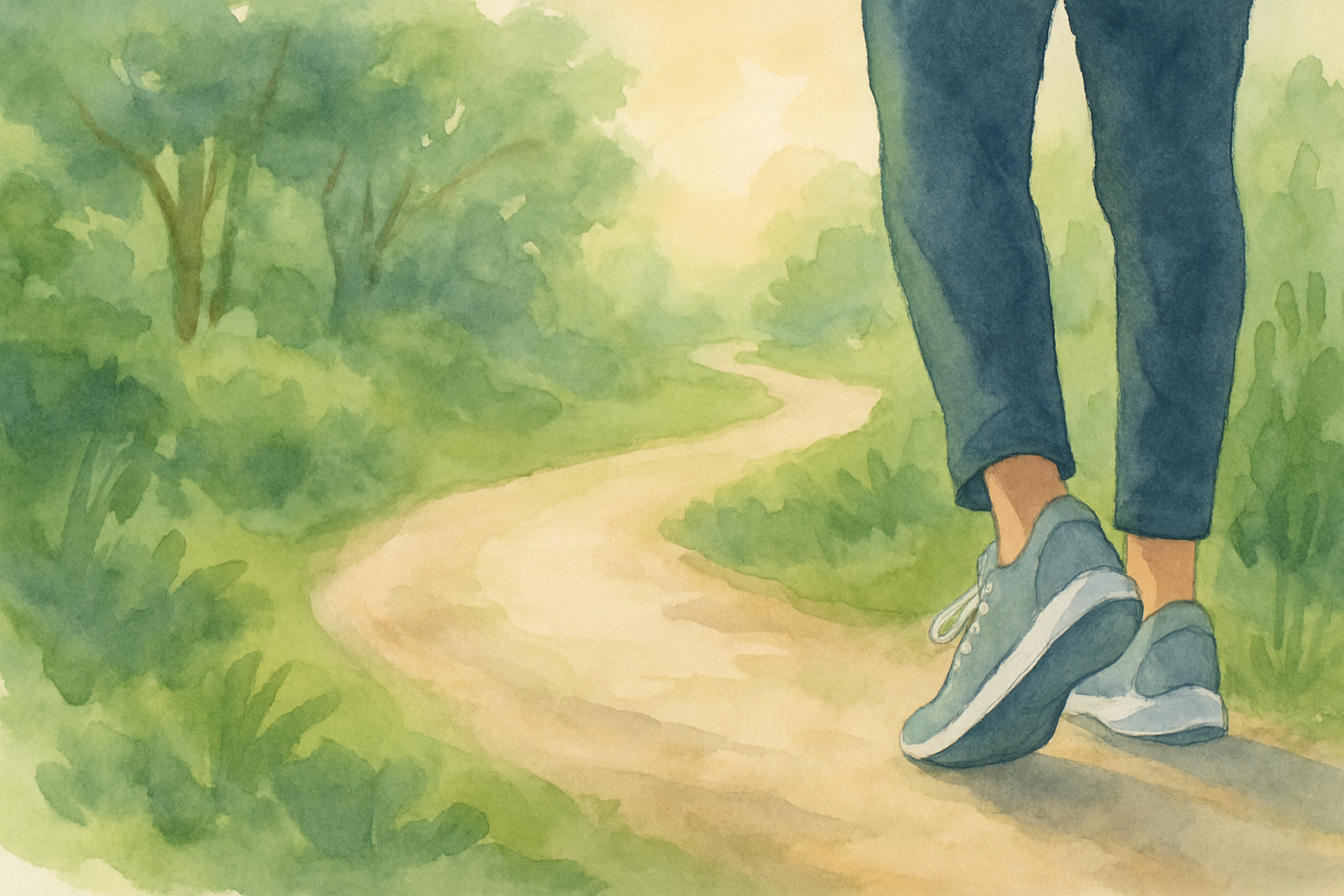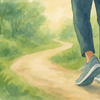Don't Let Age Slow You Down, Just Walk It Off

Getting older doesn’t have to mean slowing down. One of the simplest ways to stay strong, steady, and sharp? Just putting one foot in front of the other.
A sweeping review of decades of research confirms what people in the world’s “Blue Zones” (places like Okinawa and Sardinia, where folks regularly live past 100) have known for generations: walking isn’t just good for you, it may be one of the simplest, strongest ways to support a long and healthy life.
Let’s break it down.
Walking: Small Steps, Big Impact
When researchers looked at walking habits and health outcomes, the list of benefits read like a greatest-hits album of healthy aging. Regular walking has been tied to:

- Heart and brain health — promoting overall circulation and cognitive function
- Metabolic support — helping the body manage energy use more efficiently
- Emotional balance — supporting a positive mood and mental clarity
- Better rest — encouraging more consistent, higher-quality sleep
- Longevity — people who walk more often tend to live longer
This isn’t just correlation, studies show dose-response relationships, meaning the more consistently and purposefully you walk, the more protective the effects.
How Much Walking Does It Take?

Here’s the part everyone really wants to know: how much walking makes a difference?
The research suggests that just 30 minutes of brisk walking, five days a week (about 150 minutes total) is enough to unlock noticeable benefits.
And “brisk” doesn’t mean running. Think of a pace where talking is possible but a little challenging. Even if you can’t always hit that intensity, the message is clear: some walking is always better than none.
The Science Under the Hood
Walking isn’t only about burning calories or stretching your legs. At a cellular level, it triggers changes that ripple through the entire body:
- Circulation gets a tune-up — your heart and lungs become more efficient at delivering oxygen.
- Immune defenses strengthen — walking helps regulate inflammation and immune balance.
- Cells repair and adapt — walking influences key molecular pathways linked to longevity and resilience.
In other words, your daily walk isn’t just exercise, it’s cellular maintenance.
Lessons from the World’s Longest-Living People

In Blue Zones, exercise doesn’t mean 5 a.m. gym sessions or high-intensity intervals. It looks more like… everyday life.
Walking to the market, visiting friends, tending gardens, strolling after dinner. These low-intensity movements are so woven into daily routines that they hardly feel like “exercise” at all. Yet, they’re one of the clearest lifestyle patterns connecting communities of centenarians across the globe.
And while movement is vital, it’s far from the only healthy habit in play. The Blue Zones also share a strong tradition of predominantly plant‑based eating, focusing on whole foods like vegetables, beans, whole grains, and nuts, with meat and dairy kept to a minimum.
A meta‑analysis of 154 dietary surveys across these regions found that roughly 90–95% of their diets are plant‑based, whole‑food focused.
So what pulls it all together? It’s not about walking a marathon, or following a restrictive diet. It’s about walking often, eating simply, and staying consistent every day.
The Bottom Line
Walking is easy, free, and available almost anywhere. It’s not flashy, but that’s kind of the point.
Study after study says the same thing: if you want to age well, keep your mind sharp, and feel strong in your body for years to come, walking might just be the most underrated tool out there.
So lace up your shoes, step outside, and remember, every walk is an investment in future you.









